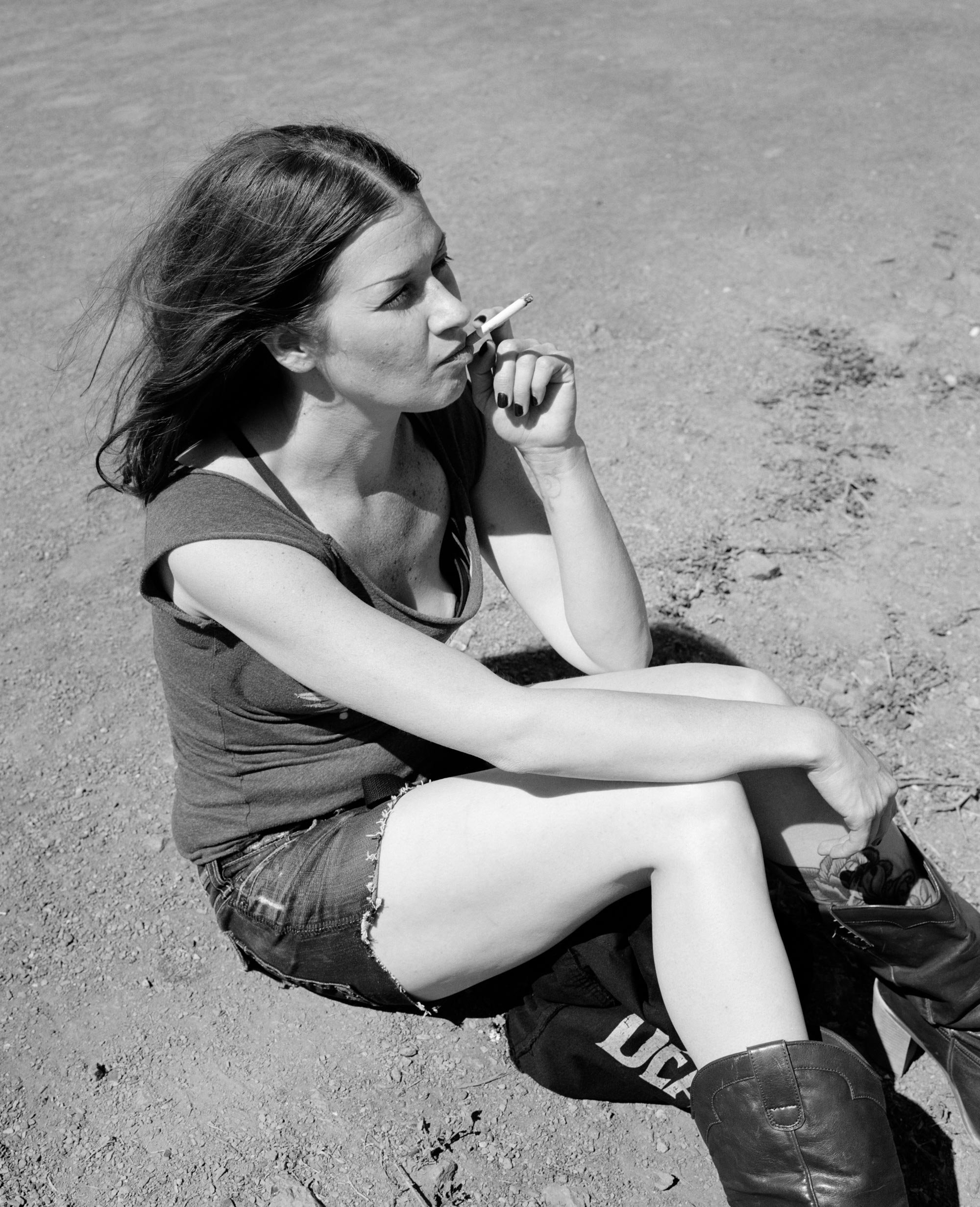The Golden City
The Golden City (2021) is a new book by Mimi Plumb in which she presents images made between 1984 to 2020. The Golden City of San Francisco is depicted through the socio-economic prism and personal gaze of the photographer. The book takes us on a journey of getting acquainted with a different perspective of the city. Through the landscape of deconstruction, observation of people and the political sentiments, graffiti with statements such as “no future,” and moments of partying, we witness the background of historical moments.
Mimi chooses the images of the breaking heart graffiti on the wall, the hugging couple, and the text with the slogan “dump Reagan” as representative of the book and the atmosphere she’s carefully crafting to reveal the distressing poverty on its rise and the clashes of classes in the city so well known to her.
Mimi Plumb is an American photographer born in Berkeley and raised in the suburbs of San Francisco. Mimi taught photography in universities, among which are the San Francisco Art Institute and Stanford University. She received an MFA in Photography from SFAI; today her work is displayed in the collection of museums across the US and in Europe. Mimi describes the stylistics and genre of her work as stemming from documentary photography with an emphasis on the personal perspective “I don't photograph in an objective, documentary style of photography. I tend to put my perspective at the center of the work.” In this interview, we speak with Mimi about her new book, The Golden City, published by Stanley and Barker. Mimi explains her approach to photography and the elements she finds important in educating her students. She draws a comparison between San Francisco of the 80s and the city it is today.
‘I grew up in suburbia in California and wanted to photograph what it looked like and felt like to live there. I don't photograph in an objective, documentary style of photography. I tend to put my perspective at the center of the work.’
The Story
Growing up in Walnut Creek, a suburb in California, later moving to Berkeley, what were your first steps to photography and what generated your interest in documentary photography depicting suburbia, local contingent, and environmental and social issues?
I grew up in suburbia in California and wanted to photograph what it looked like and felt like to live there. I don't photograph in an objective, documentary style of photography. I tend to put my perspective at the center of the work. I see the alienated teenagers that I photographed in The White Sky as a self-portrait, a representation of what I felt growing up in suburbia.
You have a long career of teaching in universities, among which are the San Francisco Art Institute and Stanford University, exploring different topics in photography. How did your practice in teaching influence your approach to photography, working on books, and building narratives?
As a teacher, I was most interested in having my students explore and photograph what was meaningful to them and what they cared about. I think that's how insightful and interesting work is made.
‘My impression now is that there aren't cheap rents in San Francisco. The artists have left the city, the middle class has moved out into the far suburbs, and the poor are too often homeless. That is a heartbreaking difference from the 1980s.’
The Golden City
The images presented in The Golden City were made between 1984 and 2020. How would you describe San Francisco back in 1984 as compared to today?
The United States has always had a class divide. When I lived in San Francisco in the 1980s, I photographed my experience of it. I was an art student working at a minimum wage job. I lived on the edge of the city where the rents were cheap, and I photographed the environment around me. My impression now is that there aren't cheap rents in San Francisco. The artists have left the city, the middle class has moved out into the far suburbs, and the poor are too often homeless. That is a heartbreaking difference from the 1980s.
‘The breaking heart and the two spreads that follow represent the heart of the book for me, essentially the climate crisis and poverty being a result of the unequal distribution of wealth and power in America.’
The feelings that arise are of hope and a possibility for change despite the depiction of images of deconstruction and the hopelessness of the poorer neighborhoods. The macro perspective of looking at the city from a distant point, from the outside, and the particular way in which the narrative is framed walk us through day-to-day moments gradually coming to show partying happening in the city. When working on the narrative, which images or storylines were important, and which did you decide not to introduce in the book?
The breaking heart and the two spreads that follow represent the heart of the book for me, essentially the climate crisis and poverty being a result of the unequal distribution of wealth and power in America.
Next Steps
What project are you working on or planning as the next one?
The past year I’ve been photographing some of the effects of the climate crisis in California. The story I’m telling is still developing, and there are many more pictures to take.














